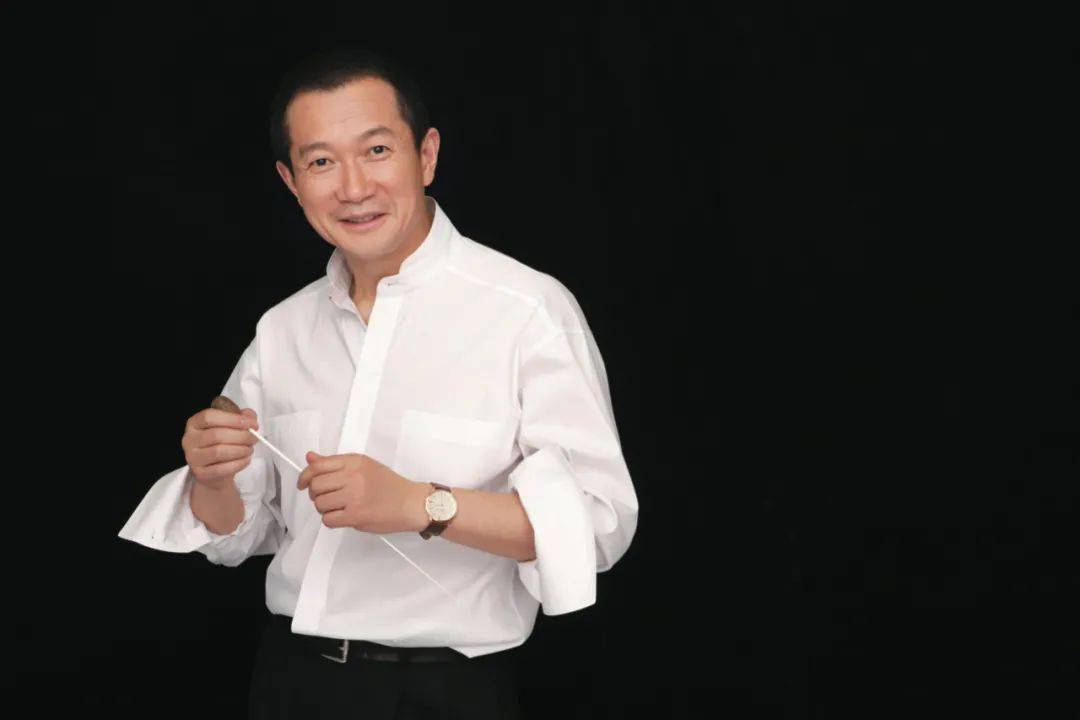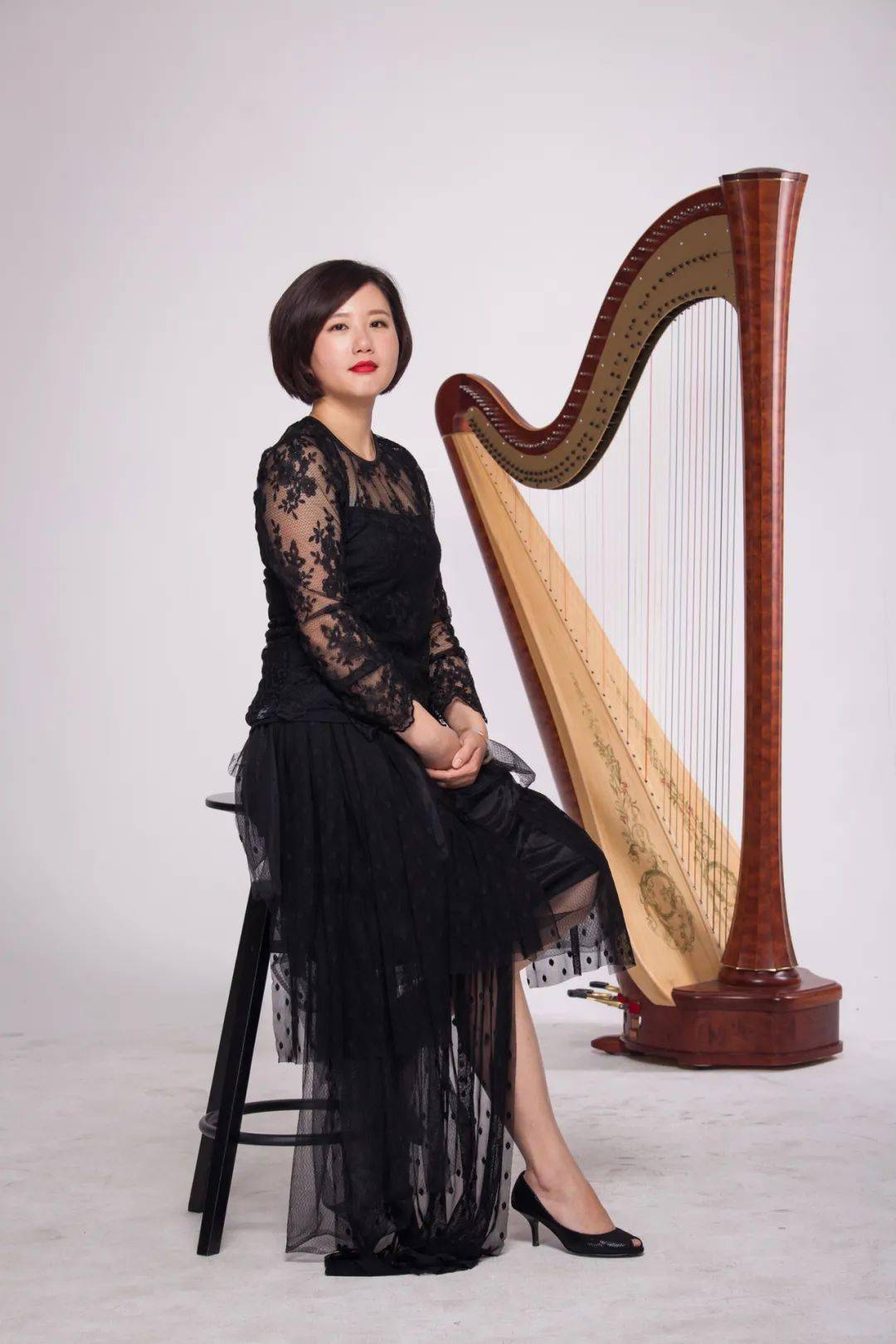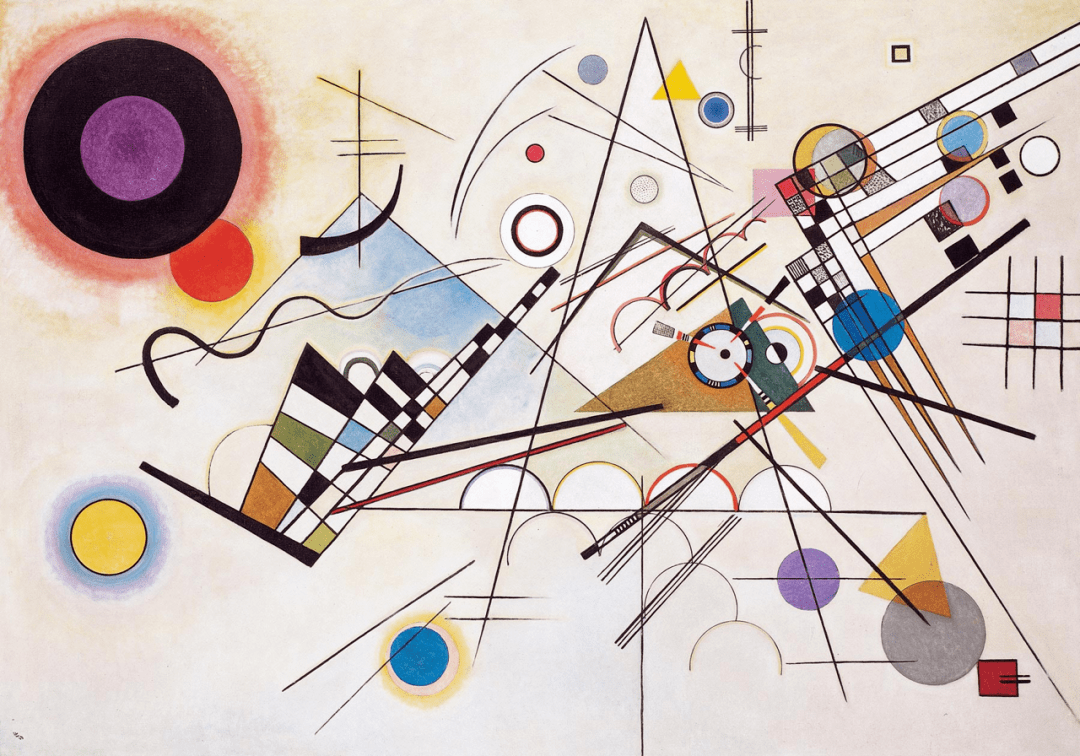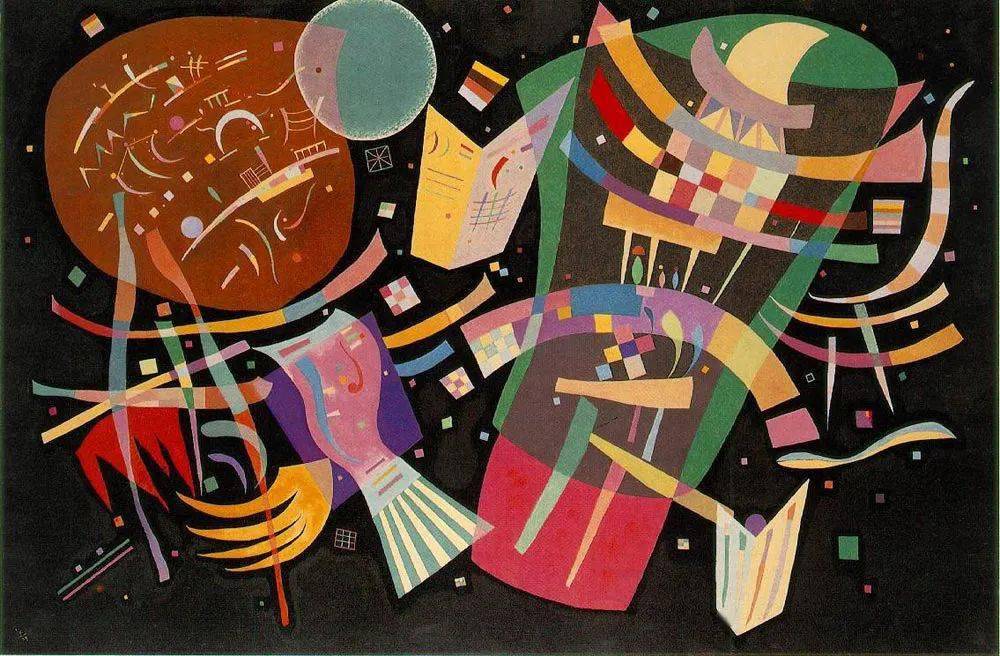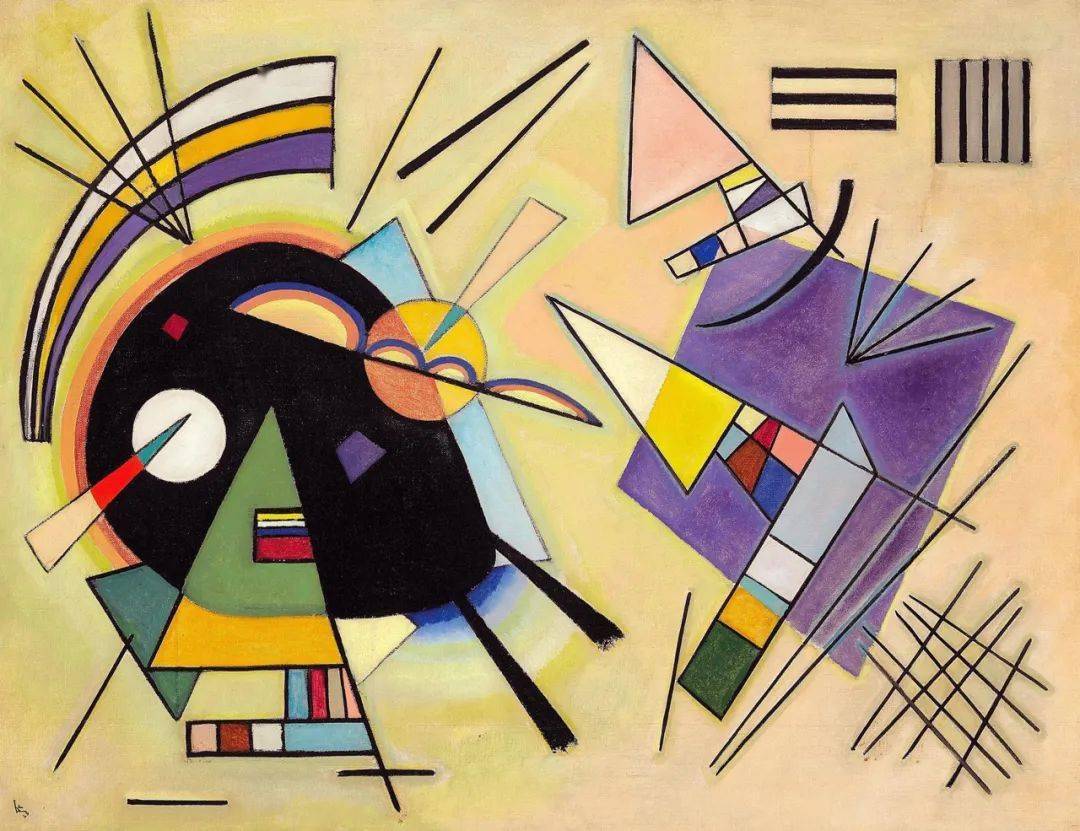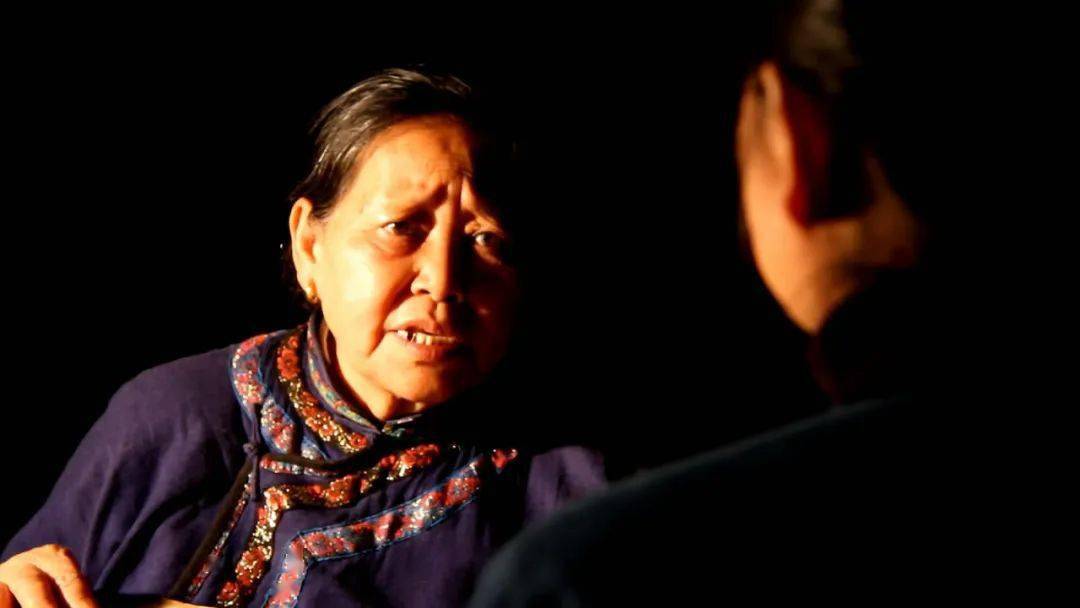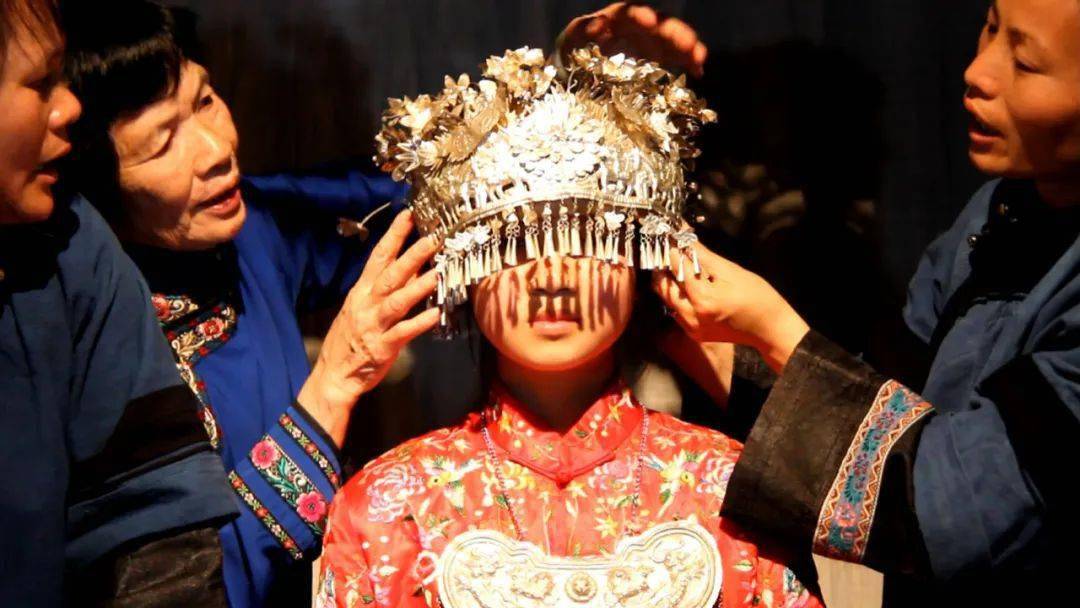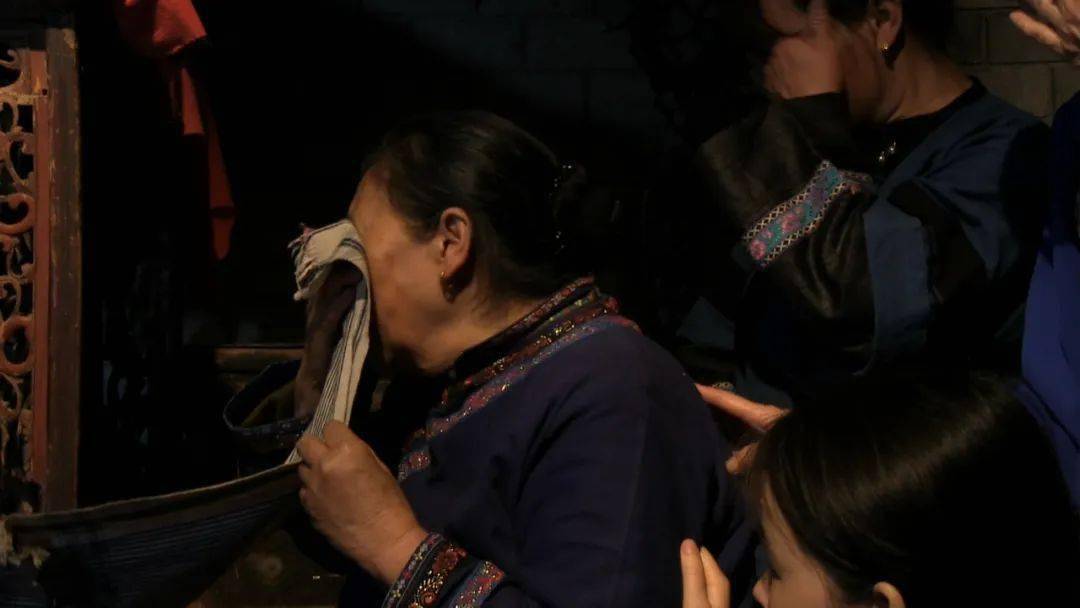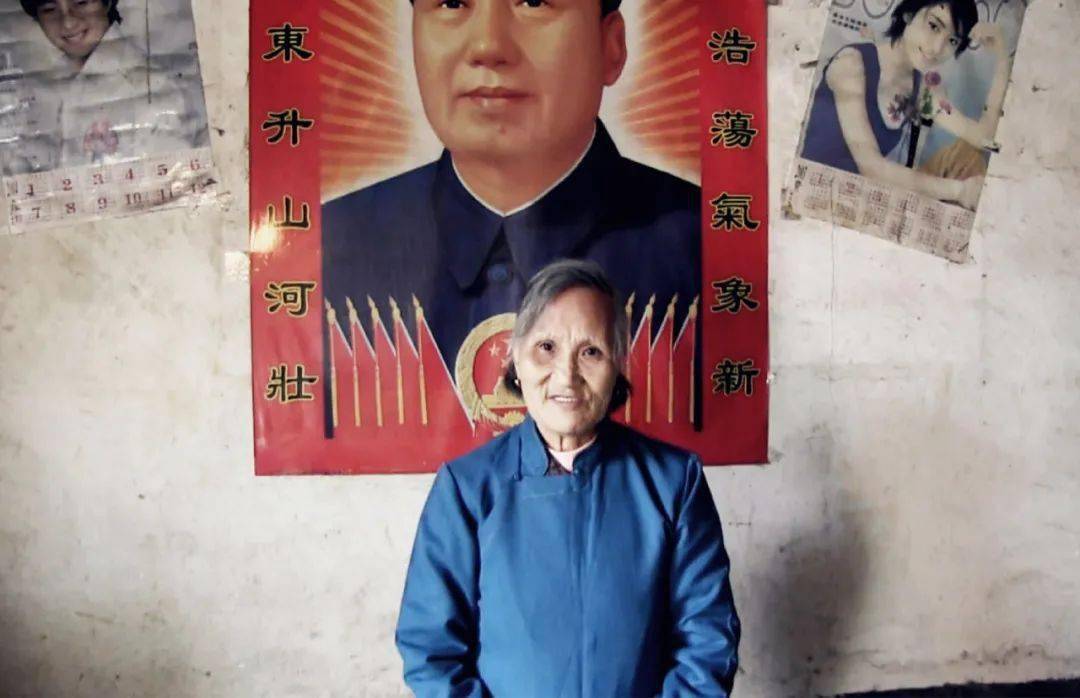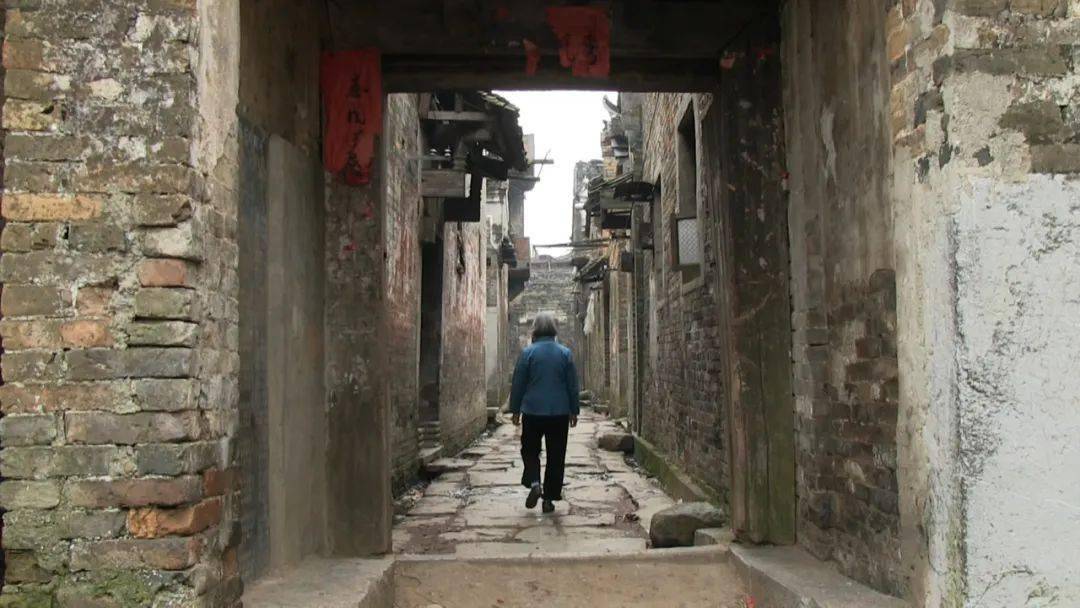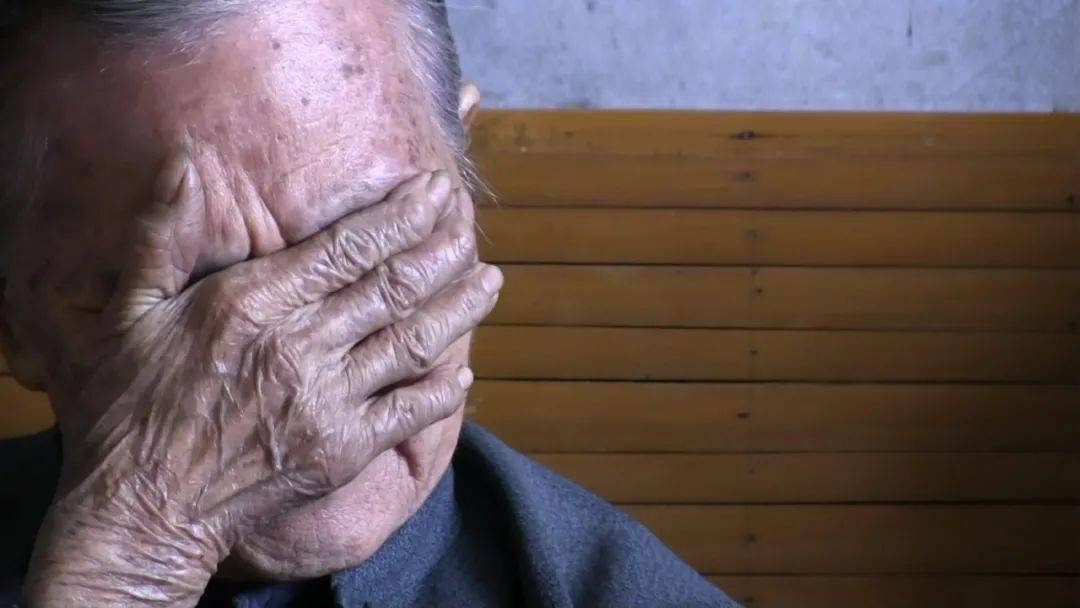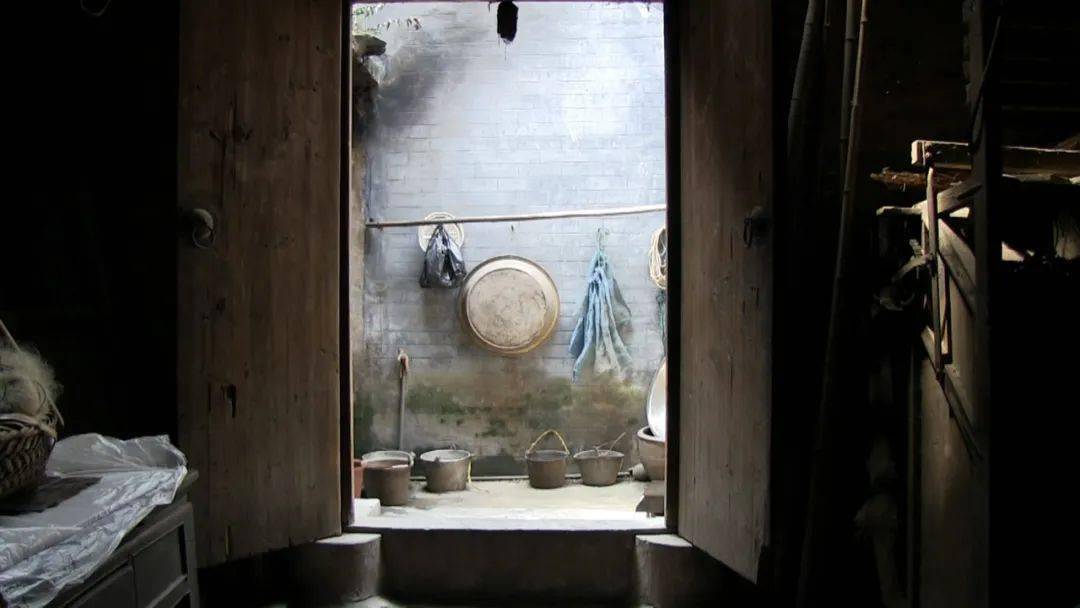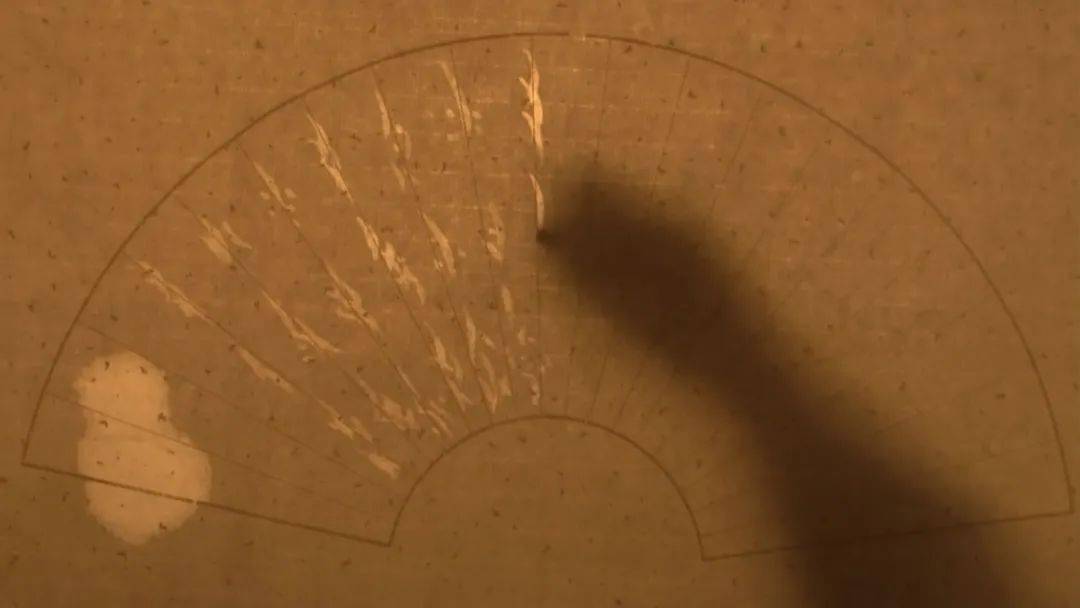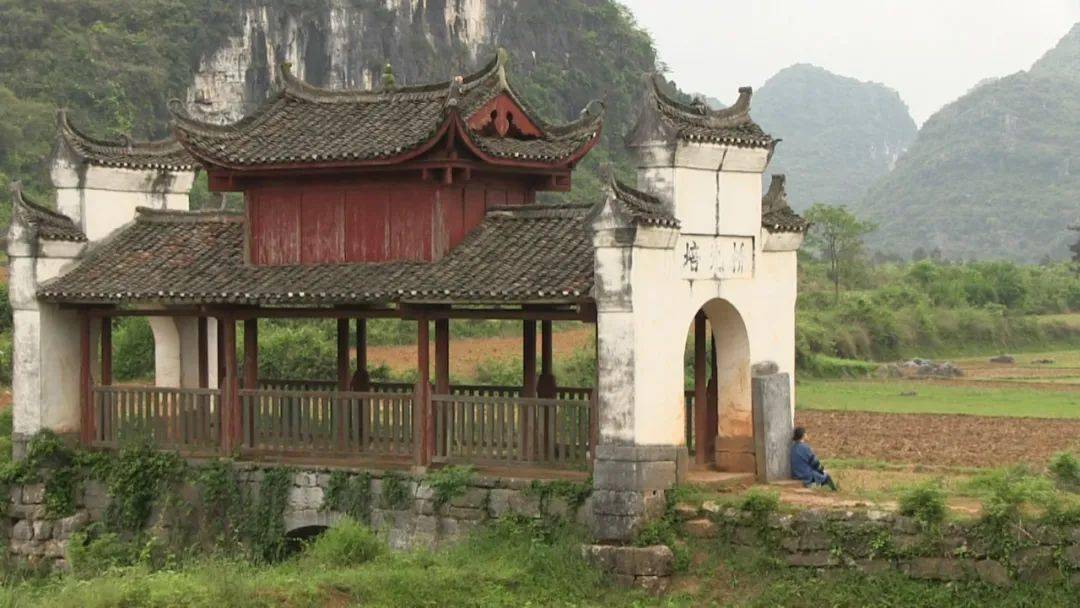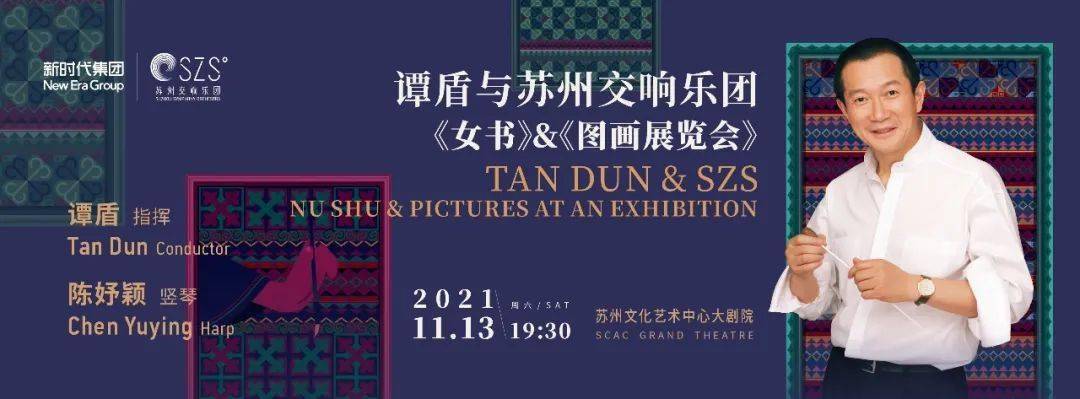微信节目册|谭盾与苏州交响乐团 |
您所在的位置:网站首页 › 谭盾马可波罗 › 微信节目册|谭盾与苏州交响乐团 |
微信节目册|谭盾与苏州交响乐团
|
本场演出全长约95分钟,中场休息15分钟。 音乐厅入场身高要求:1.1m,适合6岁以上人士观看。 NOTICE TO AUDIENCE DURATION Approximately 95 minutes with a 15-min intermission. SUGGESTED AGE 6 and above, Minimun Height For Children:1.1m.
谭盾| 指挥/作曲 国际乐坛最重要的十位音乐家之一—《纽约时报》。 被“中华之光”评选为传播中华文化年度人物。 谭盾,现任纽约巴德音乐学院院长、中国国家交响乐团荣誉艺术指导。获得威尼斯双年展艺术终身成就金狮奖、格莱美奖、奥斯卡奖、德国巴赫奖、法国艺术与文学骑士勋章、俄国的肖斯塔科维奇大奖、美国格文美尔大奖。 作为一名有思想、有创造力的中国作曲家,谭盾创作了很多具有世界影响力的音乐作品:其包括《敦煌·慈悲颂》;有机音乐《水乐》《纸乐》《垚乐》及打击乐协奏曲《大自然的眼泪》;多媒体协奏曲《女书》《地图》;网络交响曲《英雄》;歌剧《秦始皇》《马可波罗》《茶》《九歌》《Water Passion:马太受难曲》;电影音乐武侠三部曲《卧虎藏龙》《英雄》《夜宴》;以及小提琴、大提琴、钢琴协奏曲和民乐等一百多部音乐作品。谭盾还受邀为2008年北京奥运会、2010年中国世博会、2016年上海迪士尼开幕创作音乐。2020年疫情期间,他为全球遇难者创作《Prayer and Blessing:武汉十二锣》,连线武汉、上海、纽约直播并赢得全球7000万收视率。 他曾指挥世界众多著名乐团:费城交响乐团、阿姆斯特丹音乐厅管弦乐团、伦敦交响乐团、波士顿交响乐团、洛杉矶爱乐、法国国家交响乐团、日本NHK交响乐团、英国BBC交响乐团、米兰斯卡拉歌剧院团、慕尼黑爱乐、意大利圣切契利亚管弦乐团、美国大都会歌剧院乐团等。 Tan Dun| Conductor / Composer Dun TAN has been regarded as one of the "Ten most important musicians in the international music world" and has received the title of "The Light of China" cultural figure. UNESCO Goodwill Ambassador Tan Dun, is currently the Dean of Bard College Conservatory of Music, and the Honorary Artistic Director of the China National Symphony Orchestra. He has won today's most prestigious honors including the Golden Lion Award for Lifetime Achievement of Italy, the Grammy Award, Oscar/Academy Award, Bach Prize of Germany, the Order des Arts et des Lettres of France, Shostakovich Award of Russia, and Grawemeyer Award of the United States. As an intellectually and creatively fueled composer from China, TAN Dun has created many internationally influential symphonic works: Buddha Passion; Organic Music Trilogy for Water, Paper and Ceramic Concertos, as well as Percussion Concerto The Tears of Nature; multimedia concerto Nu Shu, The Map; the Internet Symphony Eroica; and opera, THE FIRST EMPEROR, MARCO POLO, TEA, NINE SONGS, and WATER PASSION AFTER ST. MATTHEW; as well as Film Music, his Martial Arts Trilogy Crouching Tiger, Hero, the Banquet, plus more than one hundred additional musical compositions that include violin, cello, piano concertos and Chinese traditional music. Tan Dun was invited to create music for the 2008 Beijing Olympics, the 2010 Expo, and the 2016 Grand Opening of Shanghai Disney. During the global pandemic in 2020, he composed Prayer and Blessing: 12 Sounds of Wuhan for its victims around the world, the live performance was streamed from Wuhan, Shanghai and New York, and has received more than 70 million views online around the world.
陈妤颖|竖琴 竖琴演奏家陈妤颖,2005年毕业于上海音乐学院本科。2012年获上海音乐学院西洋表演竖琴专业硕士学位。2006年荣获第三届法国里尔国际竖琴比赛金奖及新作品特别奖。2009年荣获俄罗斯圣彼得堡伊丽莎白“金竖琴”国际比赛金奖及其它三个单项奖。同年获上海市 2009年“优秀文艺工作者”和上海市“粉末佳年华”优秀青年艺术家称号及文艺人才基金奖励。2012年荣获2011-2012年度上海市三八红旗手荣誉称号。2013年荣获世界最高级别第九届美国国际竖琴比赛第四名,成为唯一打入八强的亚洲竖琴演奏家。2015年12月获得第19届以色列国际竖琴比赛金奖,并获法国作品演奏单项奖。 Chen Yuying|Harp Harpist Chen Yuying graduated from Shanghai Conservatory of music in 2005. In 2012, she received a master's degree in western performance harp from Shanghai Conservatory of music. In 2006, she won the Gold Award and special award for new works in the third Lille International harp competition in France. In 2009, she won the gold award of Elizabeth "golden harp" international competition in St. Petersburg, Russia and three other individual awards. In the same year, she won the title of "excellent literary and artistic worker" and "powder Carnival" excellent young artist in Shanghai in 2009 and the award of literary and artistic talent fund. In 2012, it won the honorary title of Shanghai March 8th red flag bearer in 2011-2012. In 2013, she won the fourth place in the ninth American International harp competition, the highest level in the world, and became the only Asian harpist in the top eight. In December 2015, he won the gold award of the 19th Israel international harp competition and the single award for French works. 穆索尔斯基 《图画展览会》——康定斯基视觉艺术同步呈现 MUSSORGSKY Pictures at an Exhibition——Kandinsky's visual art is presented simultaneously 1874年6月穆索尔斯基写下钢琴组曲《图画展览会》,灵感来自于观赏已逝好友——俄国杰出的艺术家和建筑师哈特曼绘画作品展。穆索尔斯基借此作品,抒发了他对友人怀念的真切情感。1928年,现代抽象艺术绘画的鼻祖康定斯基又受到穆索尔斯基《图画展览会》的启发,为这套音乐创作了一组抽象的“未来绘画”。
谭盾认为,康定斯基是一位音乐的画家,他作品的对位、构图与颜色非常具有音乐的动感与韵律。今晚与苏州交响乐团演绎的《图画展览会》,谭盾也将创新性地采用交响乐与图画影像同步结合的形式,通过穆索尔斯基音乐与康定斯基视觉艺术同步呈现,展现在当下的潮流里如何重现及重创古典音乐。
全曲以十首小曲构成,十首小曲各自独立,采用一段“漫步”音乐来将各曲联系;“漫步”主题从哈特曼的画作中获得灵感,表现作曲家在展览会上漫步观画,引子的“漫步”主题还安插在第二首、第三首,和第五首之前,并经过变奏显示出新的面貌,以表现作曲家观画时的各种情绪。后半部“漫步”主题更深入到图画音乐中去,成为乐曲发展的部分。为此,“漫步”的引子主题就像来自宇宙之声,在全曲中不仅发挥连接作用,且将各段独立的乐曲发展为统一的艺术整体。
In June 1874, Mussorgsky wrote the piano suite picture at an exhibition, whose inspiration came from his watching of the painting exhibition of his dead friend, the outstanding Russian artist and architect Hartmann. Mussorgsky used this work to express his true feelings of yearning for his friend. In 1928, Kandinsky, the originator of modern abstract art painting, was inspired by Mussorgsky's "Picture Exhibition" and created a set of abstract "future paintings" for this piece of music.
Tan Dun believes that Kandinsky was a painter of music, and the counterpoints, composition and colors of his works are very musically dynamic and rhythmic. In tonight's picture at an exhibition performed by Suzhou Symphony Orchestra, Tan Dun will also adopt the form of simultaneous combination of symphony and pictorial images in an innovative way, to show how to reproduce and reinvent classical music in the present trend, through the simultaneous presentation of Mussorgsky's music and Kandinsky's visual art. The whole work is composed of ten vignettes, each of which is independent, and a piece of "promenade" music is used to connect each vignette; the theme of "promenade" has drawn inspiration from Hartmann's paintings, showing the composer' s strolling while watching the paintings at the exhibition. The "promenade" theme of the introduction is also inserted before the second, third, and fifth vignettes, and shows a new look through variations to express the various emotions of the composer when viewing the paintings. The "promenade" theme in the second half goes deeper into the graphic music and becomes part of the development of the music. For this reason, the intro theme of "promenade" is like the sound from the universe, which not only plays a connecting role in the whole work, but also develops each independent piece of music into a unified artistic whole. 谭盾 《女书》——13部微电影与竖琴的交响曲 TAN Nu Shu——13 micro films and symphony for Harp 拍完这十三部微电影后,我眼中的江、河、湖,都如泪海一般。而这些眼泪又如同每个民族后面那条母亲河一样,承载着我们世世代代崇敬和魂牵梦绕的人类文化。“女书”则是这条母亲河中的一滴水,一束浪花,美丽又梦幻……(谭盾自述) 国际知名作曲家、指挥家和艺术家谭盾,如同他心中的英雄贝拉•巴托克一样,回到自己的家乡,听音寻路,亲自收集和拍摄了世界上唯一的,但正在失传的女书文化及原始音乐。他花了五年的时间在田野里拍摄、收集、构思、酝酿音乐的创作和视听影像的结构,其中最值得一提的观念,是这部作品中三维艺术空间的对位: 一.影视之间的时空对位;二.音乐与影视之间的对位;三.古老女书与未来之音的对位。这种“三重对位关系”始终持续在13个乐章中,这13个乐章也带有故事性的关联:第1段是序(水书法:母亲·女儿·老同)。第2、3、4段是讲母女之间的故事。第5段是女书村古老村景。第6、7、8段是讲老同(姐妹)之间的故事。第9、10、11、12段是讲女儿对母亲的思念。最后的第13段是“活在梦里”:它是把梦想中的现实融在一面“池塘水鼓”上来演绎的写意作品。谭盾的《女书》由美国费城交响乐团、荷兰阿姆斯特丹音乐厅管弦乐团以及日本NHK交响乐团进行了共同委约创作,第一次声像地、数码科技地记录和收集了古老的女书音乐,这些正在失传和消失的女书文化,无疑是世界文化宝库中的珍品,也是中国作曲家谭盾听音寻路、探索未来的灵感来源。 以下是13个乐章及微电影的主要内容: 1、秘扇 写了又干,干了又写……世世代代的母亲、女儿、老同(姐妹)之间的血肉情是女人写女书、秘扇的古老文化和渊源。女书秘扇的闺密、善良与美丽,传承了一座女人的纪念碑。
2、母亲的歌 一代接一代的母亲教女儿,女儿再教女儿的《训女词》是一部女人的《圣经》,它传承了家庭、道德、生命繁衍的文化和做女人的精神。 歌词大意: 劝声女儿听娘教,女人第一要守贞。爷娘跟前要孝顺,兄弟姐妹要和睦。盐油柴米要珍惜,创业兴家要勤劳。衣裳不必绫罗缎,粗纱棉布要整齐。坐立行走须庄重,切莫乱步与摇身。
3、穿戴歌 十五岁就出嫁,而出嫁的那一天就是当地女人最美丽的日子:即将分别的姐妹们都在为她戴妆。漂亮的头饰和嫁衣里隐藏着一颗颗依依不舍的心。穿戴好的女人,心里作好了一生的准备,此时的女人就像一座生命的纪念碑。 歌词大意: 嘱姐穿衣慢慢穿,哩喨哟哦哩喨噜啊,噜啊嗹啫哩叻。 嘱姐穿裙慢慢穿,嘱姐凤冠慢慢戴,嘱姐下楼慢慢下。
4、哭嫁歌 连哭三天三夜,一条哭湿了的围巾连接着母亲和女儿的世世代代,母女情自从女儿出嫁后,必由秘写的“女书”来传递。 歌词大意: 母亲:唉噫花哦!噢女啦!唉噫红花今日要出叻哦乡啦! 唉哟花哦!噢女啦!唉噫脚踩金砖上高叻哦轿啦! 花轿里面放嫁妆哦!哦凤啦!唉噫女有花轿来作伴哦! 唉噫花啦!噢女啦! 女儿:驰哦娘啦!惜不惜啦!舍得不啦!驰哦娘啦! 红书到来驰收叻哦下啦! 毑哦娘啦!花轿到来女抵叻哦挡啦! 哦娘啦!惜不惜啦!舍得不啦! 驰哦娘啦!红书到来毑收叻哦下啦!驰哦娘啦!
5、女书村 每一个民族或文化的后面都有一条母亲河,就在这个宋代古村的河边,这里的女人用自己的一生,孕育了自己的文字——女书。
6、思念老同 除了母女情外,姐妹情也是女书的主要诗篇。 思念老同的歌声让她在女书里重温儿时的幸福和天真,让她的孤独的生活有了寄托,让她在苦难中看到光亮。 歌词大意:厅上闹热送我女,哩来喨喨来噜,来喨噜来送我女。 满堂坐起他舅位,哩来喨喨来噜,来喨噜来送我女。 他舅位上客不齐,哩来喨喨来噜,来喨噜来送我女。
7、深巷 女人的深巷,一辈子也走不完,她在寻找儿时的老同。从这个家到那个家,这扇门到那扇门,这条河到那条河,从这个朝代到下一个朝代……女人的路啊,永远走不完。
8、老同相遇 老同见面,一切忧愁尽去,只有儿时的欢笑和心心相印的哭述。 老同间相互给予的温暖和体贴,一直伴随她们走入婚姻,使她们在煎熬和苦难中坚韧不拔。 歌词大意: 何艳新:表姑,我们好久没坐到一起了,我们大家坐一起唱首歌吧!唱首正月新年吧! 蒋石女:嗯,好的,唱正月新年。 蒋石女:适合年龄抽起到,抽的百姓不安然。 家有三男抽一女,家有四男抽一双。 十八抽到四十五,还有家有几多人? 先抽之人计不算,去到每家抽一兵。 抽去力强借去力,留起老幼在家中。 留起老幼无用处,里样找出在话边。 如今世界转得好,留着后辈去当兵。 去到当兵无人埋,可怜家中老少人。 心中想起好气惜,父母亲戚看当兵。 如今世界转得好,想起哥哥…… 蒋石女:唱不去了,记不得了。 何艳新:嗯!唱得好!
9、女儿河 是河还是泪?答案只有水知道。 女儿河是世世代代的女儿、妈妈、奶奶的河,她们的泪都在思念的歌里淌出来,在梦想中荡出去。这是一条泪河。 歌词大意: 二月有心归望驰,驰娘留女过诛鸟, 他家也有诛鸟节,不比在家做女时。 做女欢乐真欢乐,做媳欢乐眼泪流。 三月有心归望驰,驰娘留女过清明。 他家也有清明节,不比在家做女时。 做女欢乐真欢乐,做媳欢乐眼泪流。
10、祖母故居 百岁老人高银仙是女书最重要的传人,她人走了,茶却没有凉,在她的故居里,孙女坐在了奶奶的板凳上,你仿佛又听到奶奶绣花时的女书回声…… 歌词大意: 锦绣文章达万千,不信世间有奇文。 永明女子好才学,修书传诵到如今。 手捧女书仔细看,字字行行写得清。 谁曰女人无用处,从来女子半边天。 因为封建不合理,世世代代受煎熬。 做官做府没资格,学堂之内无女人。 永明女子学女书,不为当官不为民。 只为女人受尽苦,要凭女人诉苦情。 做出好多书纸扇,章章句句血淋淋。 好心之人拿起读,没人不曰真可怜。
11、泪书 曾经是女儿的莫翠凤的哭唱,回忆着五十年前的婚嫁,时光流逝了半个世纪,人走了,可眼泪还是没有干。 歌词大意: 唉噫毑哦!哦娘啦!唉噫竹叶哦青啦!唉噫毑哦!噢娘啦!唉噫今日时好日又好啦!唉噫毑哦!哦娘叻!(我哭不出来了) 唉噫花鼓到噢哦来啦!唉噫毑哦!噢娘叻!唉噫柔柔哦打啦!唉噫毑哦!噢!娘啦!唉 噫花轿到啊!噢来叻!唉噫毑啊!噢娘啦!唉噫柔柔哦吹啦!
12、培元桥 固本培元。培元桥是女儿听寻和思念母亲的心桥,是寻根念祖的通道。 歌词大意: 厅屋中间有条藤,藤子开花十二层。驰娘养得金坨女,双吹双打送出门。
13、活在梦里 女人是水,流走心中忧;女书是泪,洗去心上愁。 女人是河,淌出心上梦;女书是海,荡尽心里歌。 尽管女人村的女人流尽了眼泪,为什么她们的歌声和现实生活还是那么浪漫?那是因为每天母女、姐妹相聚时唱写女书、绣画女书的美好时光,给予了她们另外一个如梦的美丽现实和精神王国……这是一段非常写意的梦幻曲。
After shooting the 13 micro-films, all the rivers and lakes in my eyes were like a sea of tears. And these tears, like the mother river behind every nation, carry the human culture that we have respected and dreamed of for generations. "Nu Shu" is a drop of water in this mother river, and a bunch of waves, beautiful and dreamy... (Tan Dun's narrative) The internationally renowned composer, conductor and artist Tan Dun, like his hero Bela Bartok, returned to his hometown, looked for the road by listening to the sound, and thus, he collected and photographed the Nu Shu culture and original music, the only existent art in the world that are being lost. He spent five years in the field shooting, collecting, conceiving, and brewing for the creation of the music and the structure of the audiovisual images. The most noteworthy concept is the counterpoint of the three-dimensional art space in this work: First, the time and space counterpoint between film and television; Second, the counterpoint between music and film and television; Third, the counterpoint between the ancient Nu Shu and the voice of the future. This "triple counterpoint relationship" has always continued in the 13 movements, and the 13 movements are also associated with a story: The first paragraph is the preface (water calligraphy: mother·daughter·Lao Tong). Paragraphs 2, 3, and 4 are about the story between the mothers and daughters. The fifth paragraph is the ancient village scene of Nu Shu Village. Paragraphs 6, 7, and 8 are about the stories between Lao Tong (the sisters). Paragraphs 9, 10, 11, and 12 are about how the daughters miss their mothers. The last thirteenth paragraph is "Living in the Dream": It is a freehand work that combines the reality of the dream with a "pond drum". Tan Dun’s Nu Shu was co-commissioned by the Philadelphia Orchestra, the Concertgebouworkest and the NHK Symphony Orchestra. recorded and collected the ancient Nu Shu music audiovisually and digitally for the first time. These lost and disappearing Nu Shu cultures are undoubtedly gems in the treasure house of world culture. They are also the sources of inspiration for Chinese composer Tan Dun to find the road and explore the future by listening to the music. The following are the main contents of the 13 movements and micro-movies: 1. The Secret Fan Writing and laboring, laboring and writing... The flesh and blood relationship between the mothers, daughters, and peer sisters for generations is the ancient culture and origin of women's writing of the female book and the secret fan. The intimacy, kindness and beauty represented by the secret fan in the female book have been continued like a monument for women. 2. Mother's Song The Instructions to Women taught by the mothers to their daughters from generation to generation is the “Bible for Women", which inherits the culture about the family, morals and life reproduction and the spirit of being a woman. The main idea of the lyrics: My daughter, listen to your mother's teachings. Keep chastity is the first requirement for a woman. You should be filial to your parents, and keep good terms with your brothers and sisters. You must cherish salt, oil, firewood and rice, and you must work hard in starting a business. You do not need to wear expensive clothes, and should keep your course cotton clothes neat and tidy. You must behave solemnly, and never shake your body violently in walking. 3. Song of Dressing Girls get married at the age of fifteen, and the day of the wedding is the most beautiful day for a local woman: all her peers are doing the makeup for her. The beautiful headdress and wedding gown are hiding a heart reluctant to leave the home. The well-dressed woman has prepared for a lifetime in her heart, and the woman at this moment is just like a monument of life. The main idea of the lyrics: I advice my sister to dress slowly. Liliang yo e liliang lu ah, lu ah lian zheli le. I advice my sister to put on the skirt slowly, to put on the phoenix crown slowly, and to go downstairs slowly. 4. Wedding Lament After sobbing for three days and three nights, they use the scarf soaked by tears to link the generations of mothers and daughters. After the daughter's wedding, the mother-daughter love must be passed on by the secret "Nu Shu". The main idea of the lyrics: Mother: Aiyihua! My girl! With the red flower you are going out of the village today! Aiyihua! My girl! You are stepping onto the gold bricks and getting on the high sedan! In the sedan you are sitting together with your dowry! Aiyi, my girl has a sedan as companion! Aiyihua, my girl! Daughter: My dear mother! I don't want to leave you! I can't part with you! The red letter has come to call me! My dear mother! The red sedan has come to take me! How can I leave you? How can I bear the parting? Oh my mother! The red letter has come. Oh, my dear mother! 5. Nu Shu Village Behind every ethnic group or culture is a mother river. Just by the river in this ancient village of the Song Dynasty, the women have used their whole life to work out their own writing, the Nu Shu (Secret Songs of Women). 6. Miss Lao Tong In addition to mother-daughter love, sisterly love is also the main poem of Nu Shu. The songs of yearning for her peer sisters help her relive her childhood happiness and innocence in the Nu Shu, give her sustenance in her lonely life, and let her see the light in the sufferings. The main idea of the lyrics: The hall is so hilarious, lilai liang liang lai lu, everyone comes to see my daughter off. The honored guests and relatives are here, lilai liang liang lai lu, coming to see my daughter off. Some guests have not come yet, lilai liang liang lai lu, coming to see my daughter off. 7. Deep Alley A woman's deep alley is so deep that you can't walk through all of it even in a lifetime. She is looking for her friends in her childhood. From one house to another, from one door to another, from one river to another, from this dynasty to the next dynasty... The road of a woman can never be finished. 8. Lao Tong Meet Again When Lao Tong (old sisters) meet, all sorrows are gone, and they only have the childhood laughter and the intimate crying and chatting. The warmth and consideration given to each other by the old sisters has always accompanied them into their marriage, making them able to persevere in the countless sufferings. The main idea of the lyrics: He Yanxin: Cousin, a long time has passed since we sat together last time. Let's sit down and sing a song together! Let's sing The New Year! Jiang Shinv: Well, ok, sing The New Year. Jiang Shinv: When the lot drawing begins, every family becomes uneasy. Every child in every family must draw a lot for becoming a soldier. From people of 18 to those of 45, how many people can be left in the family? Every family must send one person to become a soldier. All the strong people have been taken away, with only the elderly and young being left at home. The elderly and young can do nothing useful, leaving the family in poverty. The world is run so well that we send our juniors to serve in the army. Those serving in the army will have no one to bury them when they die. The young and old at home are so miserable. I feel so sorry whenever I think of that. There are so many relatives of mine going to become soldiers. The world is run so well, but I miss my elder brother.. Jiang Shinv: I can't sing anymore, I can't remember the words. He Yanxin: Hmm! Well done! 9. Nu'er River Is it a river or tears? Only water knows the answer. Daughters’ River is the river of daughters, mothers, and grandmothers for generations. Their tears are flowing out of the song of yearning and are floating away in their dreams. This is a river of tears. The main idea of the lyrics: In February, my daughter returns and I keep her at home to spend Zhuniao Festival. She can spend Zhuniao Festival in her husband's home too, but she cannot enjoy it so much as here. Being a girl at her parents' home is so happy naturally, but being a wife is happy with tears flowing. In March, my daughter returns and I keep her at home to spend Qingming Festival. She can spend Qingming Festival in her husband's home too, but she cannot enjoy it so much as here. Being a girl at her parents' home is so happy naturally, but being a wife is happy with tears flowing. 10. Grandmother's House The centenarian Gao Yinxian was the most important inheritor of Nu Shu. She is gone, but her tea is not cold. In her former residence, the granddaughter is sitting on the grandma's bench, and you seem to have heard the echo of Nu Shu when the grandma was embroidering... The main idea of the lyrics: In the millions of beautiful articles in the world, there must be masterpieces. Women from Yongming are so talented, and they have been learning and reciting to this day. From the Nu Shu we can see fine literature. Who said women are useless? They have always been holding a half of the sky. Because of the unreasonable feudalism, they have suffered from generation to generation. They had no qualification to enter the official world, and nor could they teach or learn in the school. Yongming's women study the Nu Shu, neither for officialdom nor for career. They just want to tell the bitter stories of women as they have suffered so much. They have made many books and paper fans full of tears and blood. Whoever reads them will sympathize with them. 11. Letter Full of Tears It is the tearful singing of Mo Cuifeng, who was once a daughter, recalling her marriage 50 years before. Half a century has passed by, and the person is gone, but her tears are not dry yet. The main idea of the lyrics: Oh oh oh! Oh mother! Aiyi the bamboo leafs are green! Aiyichi! Ah, my mother! Aiyi today is a good day! Aiyichi e! My mother! (I can's cry any more.) Aiyi, the flower drum is coming! Aiyichi er! My dear mother! Aiyi rou rou eda la! Aiyichi e! Oh, my mother! Aiyi the sedan is coming! Aolai le! Oh, my mom! Aiyi rou rou e chui la! 12. Peiyuan Bridge Consolidate the foundation and cultivate the fundamental. Peiyuan Bridge is a heart bridge for daughters to listen to and miss their mothers, as well as a path to seek their roots and remember their ancestors. The main idea of the lyrics: There is a vine in the middle of the hall, and the vine blossoms on twelve levels. My mother has brought up a golden girl and is sending me out of the home for marriage. 13. Living in a Dream A woman is water, and from her heart is sorrow flowing out; the women's book is tears, which washes away her sorrow from her heart. A woman is a river, from her is flowing out the dream; the women's book is a sea, which washes away the songs in her heart. Although the women in the Women's Village shed tears all the time, why are their singing and real life so romantic? That's because every day when mothers, daughters and sisters get together, the wonderful time of singing and writing Nu Shu and embroidering Nu Shu gives them another beautiful reality and spiritual realm like a dream... That is a very free and enjoyable reverie.
近期节目预告 1 2021.11.18 无限·肖斯塔科维奇 苏州交响乐团成立五周年音乐会 2 2021.12.04-10 2021第二届苏州金鸡湖钢琴比赛 3 2021.12.17 苏交大师系列·二 江晨:法国钢琴作品专场音乐会 4 2021.12.28 水城和朋友们——声音的时空之旅 5 2021.12.31 外企德科苏州独家冠名呈现 2022苏州交响乐团新年音乐会 苏州交响乐团2021-22音乐季 轻听古典,重彩人生返回搜狐,查看更多 |
【本文地址】
今日新闻 |
推荐新闻 |
